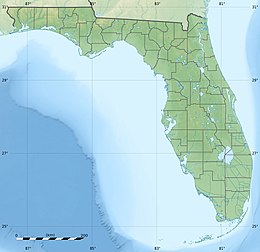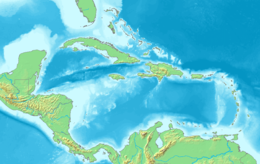This is an old revision of this page, as edited by Donald Albury (talk | contribs) at 22:43, 27 November 2023 (added NRHP infobox for archaeological and historical district). The present address (URL) is a permanent link to this revision, which may differ significantly from the current revision.
Revision as of 22:43, 27 November 2023 by Donald Albury (talk | contribs) (added NRHP infobox for archaeological and historical district)(diff) ← Previous revision | Latest revision (diff) | Newer revision → (diff) Island in the upper Florida Keys, United States House on Lignumvitae Key, December 1977 House on Lignumvitae Key, December 1977 | |
  | |
| Geography | |
|---|---|
| Location | Florida Keys |
| Coordinates | 24°54′07″N 80°41′56″W / 24.902°N 80.699°W / 24.902; -80.699 |
| Administration | |
| State | Florida |
| County | Monroe |
| Lignumvitae Key Archaeological and Historical District | |
| U.S. National Register of Historic Places | |
| Nearest city | Islamorada, Florida |
|---|---|
| NRHP reference No. | 98000652 |
| Added to NRHP | February 16, 1999 |
Lignumvitae Key is an island in the upper Florida Keys.
It is located due north of, and less than one mile from the easternmost tip of Lower Matecumbe Key. The island is the location of the Lignumvitae Key Botanical State Park and the Lignumvitae Key Archeological and Historical District, and largely overlaps the Lignumvitae Key Aquatic Preserve.
The island has the Keys' highest point above sea level of 19 feet (5.8 m), which beats the island of Key West's Solares Hill by 1 foot (30 cm). This dark green island is covered in rare tropical hardwoods such as the island's namesake, Holywood Lignum-vitae (Guaiacum sanctum).
History
Records of the ownership of Lignumvitae Key go back to 1843, including the years of 1919-1953 when the Matheson family of Miami owned the island. The island was purchased by Dr. Edwin C. Lunsford, Sr. and two other investors in 1953. Charlotte and Russell Neidhauk lived on the island and served as caretakers during this period. The coral bedrock house they lived in still stands today. On March 2, 1971, Lignum Vitae and nearby Shell Keys were purchased by the State of Florida, and Lignum Vitae became Lignumvitae Key State Botanical Park.
The key is called Cayo de la Leña (Spanish for "Firewood Key") on an unsigned Spanish chart of 1760.
References
- "Lignumvitae Key High Point, Florida". Peakbagger.com.
- Wilkinson, Jerry. "History of Lignum Vitae Key". Keys Historeum. Historical Preservation Society of the Upper Keys. Retrieved 2009-12-06.
External links
This Monroe County, Florida location article is a stub. You can help Misplaced Pages by expanding it. |